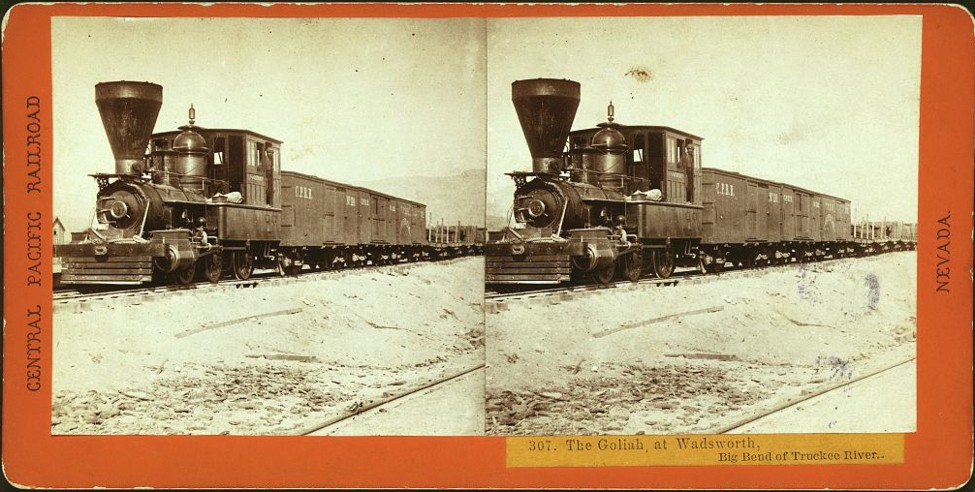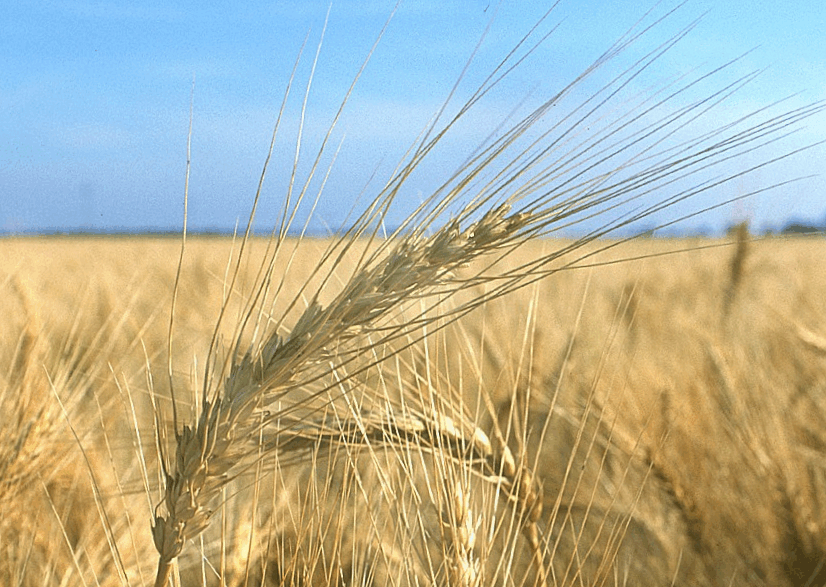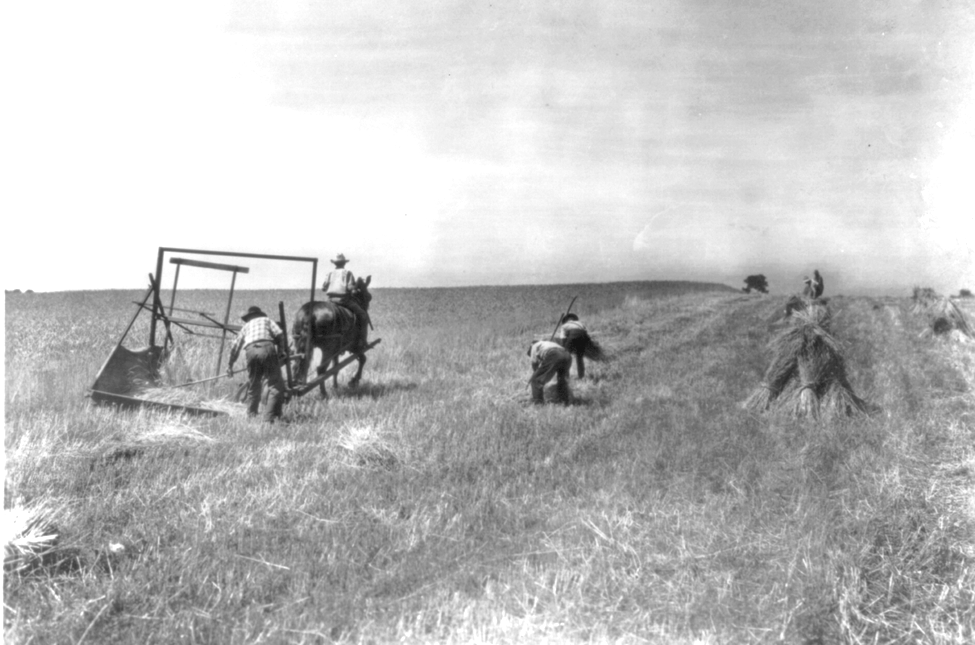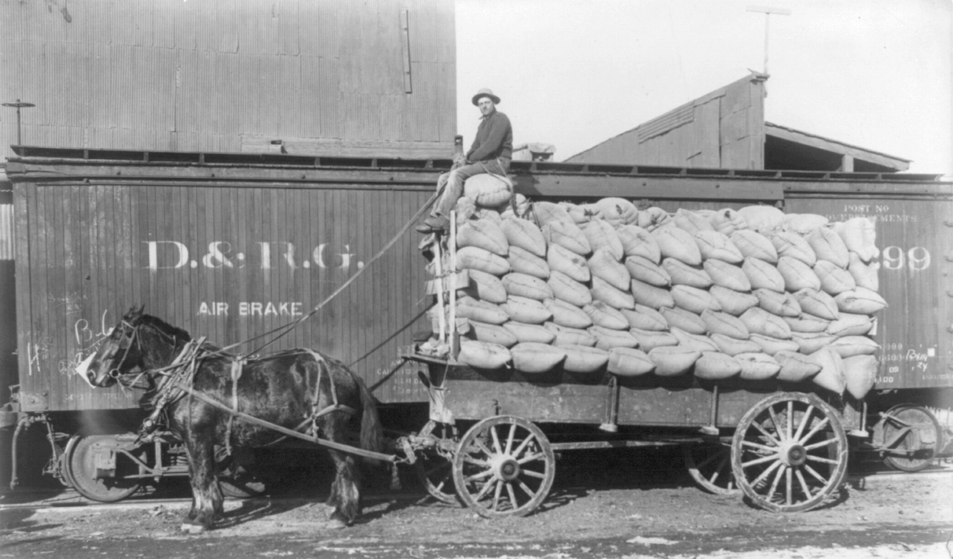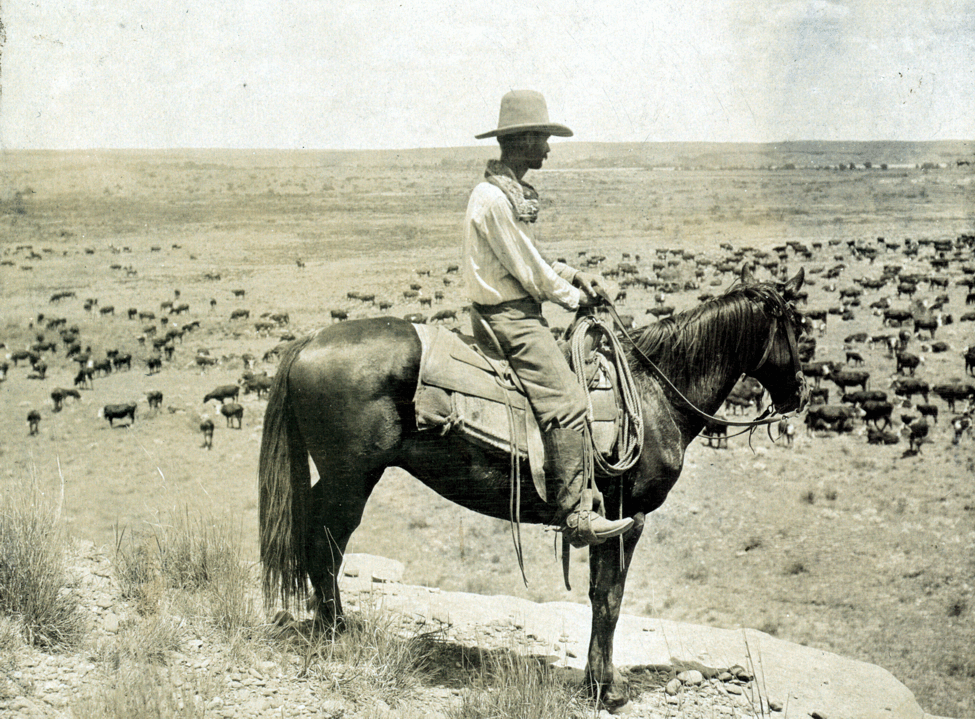|
The changing perception (view) of the
Great Plains
In the decades after the Civil War, from 1865 until the early 1900s, hundreds of thousands of Americans moved into the area of the West called the Great Plains. Before the Civil War, most people going to the West passed right over the Great Plains. They considered the area a vast treeless wasteland. Their goal was to get to the far West - usually California or Oregon. After the Civil War, the perception of the Great Plains changed. There were many new inventions, adaptations, and technological advances that made it possible to farm the land in that area. Some examples are shown in the photographs below. |
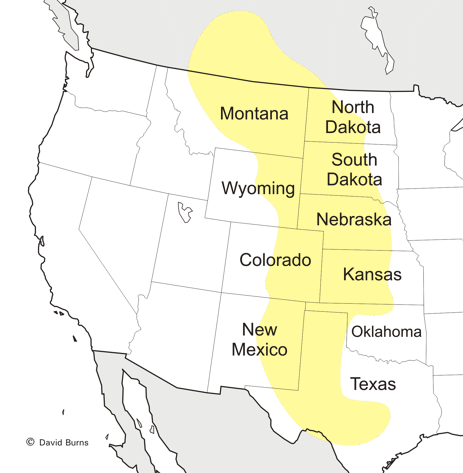 The Great Plains |
Inventions and adaptations that made it
possible to settle and farm the Great Plains:
|
1.
Sod houses
The two pictures below show settlers on the Great Plains. Wood for building houses was hard to get, because there are not many trees in that area. So the early settlers made their houses from sod - the top layer of soil and grass - cut and stacked to make the walls. Even the roof was often made of sod placed over wood beams. If the farm was successful, the owners would later build a new house using wood boards shipped in by railroad. |
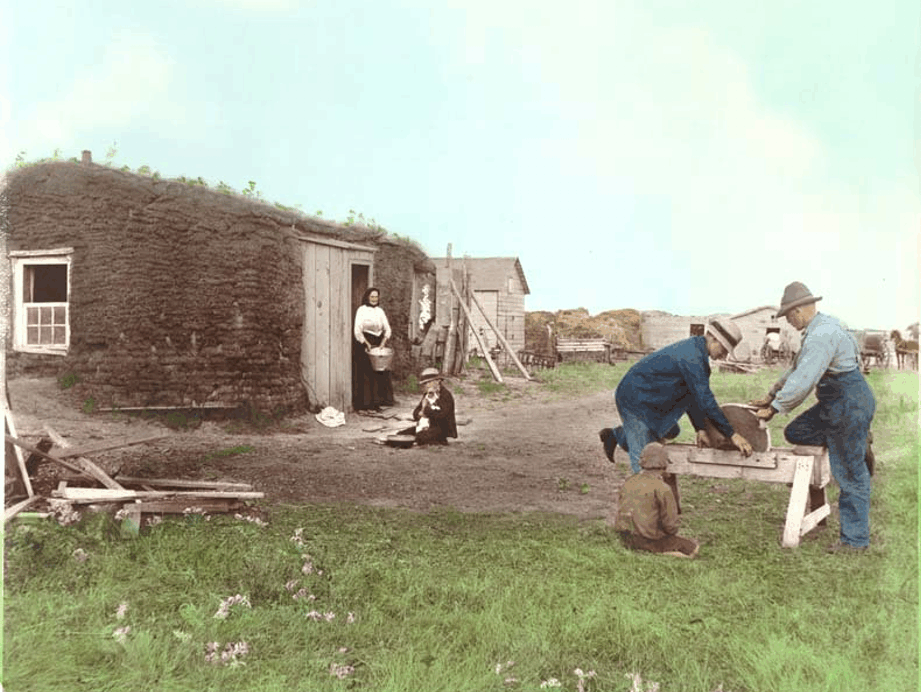
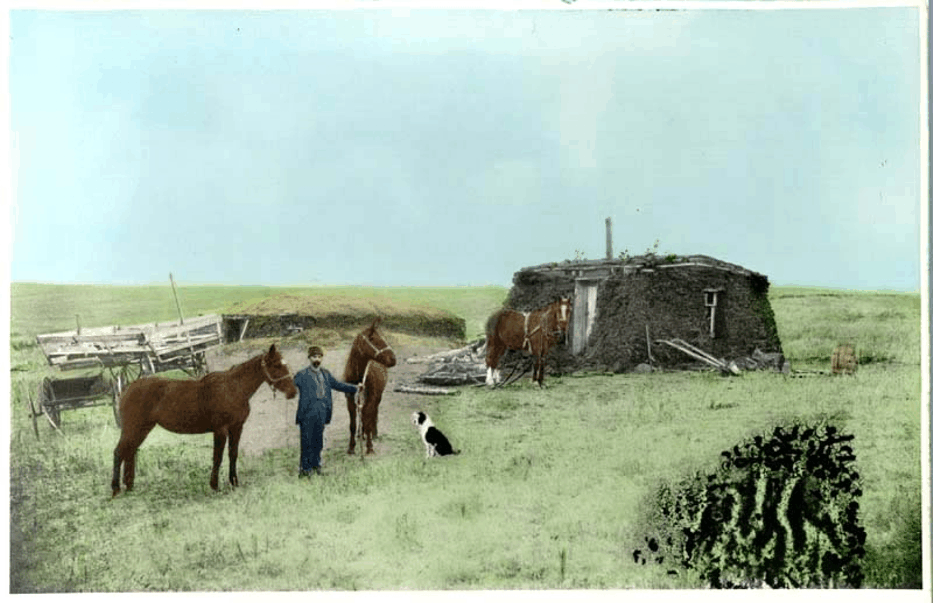
|
2.
Steel plows
As settlers began moving onto the Great Plains, they discovered that cast iron plow blades commonly used in eastern states would often clog up. The soil of the Great Plains is thick and rich, and would often stick to the cast iron blade. Fortunately, a blacksmith named John Deere invented a way to make plow blades out of steel. Steel is harder than cast iron, and can be made so smooth that it cuts through soil without clogging up. The photo below of a plow made with a steel blade is from a demonstration of old-time farming techniques. The plow cuts through the soil without any problem. |
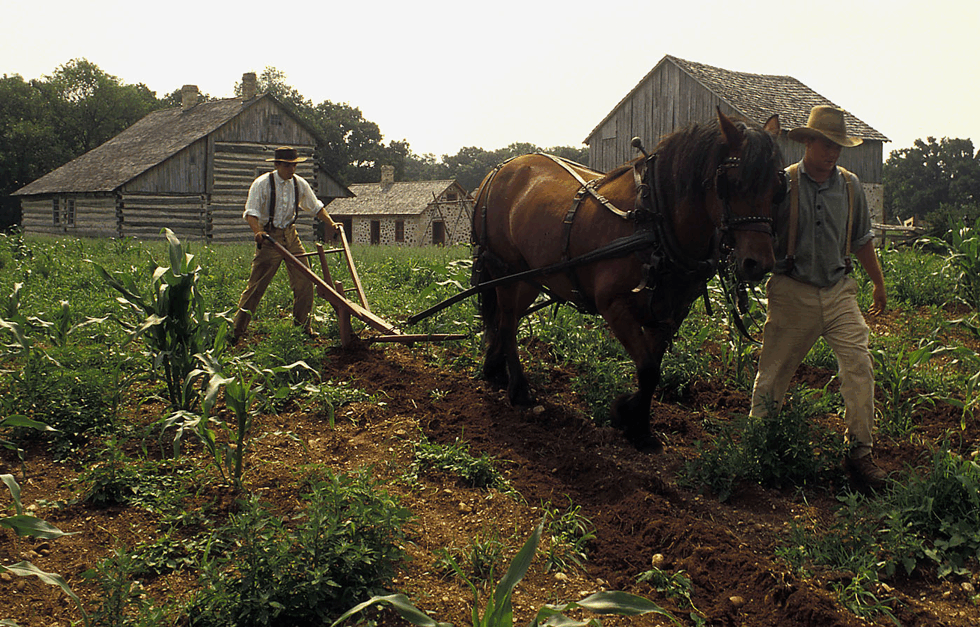
|
John
Deere's great invention
The drawing below shows John Deere's steel plow blade and the wood handles of a "walk behind" plow. As a horse pulls the plow, the farmer uses the handles to keep the blade of the plow moving just at the right depth in the soil. The blade cuts and turns over the soil, which is then ready for planting. |
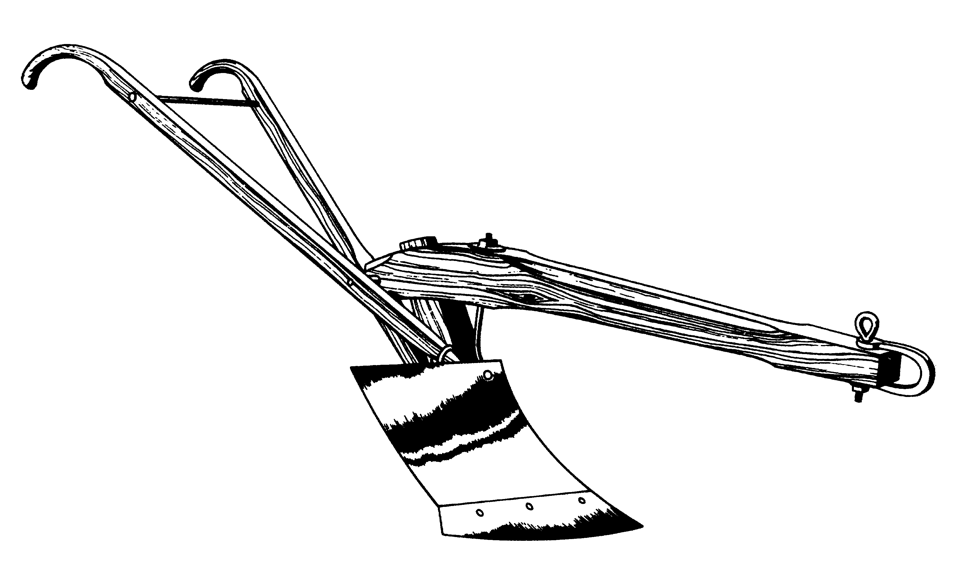
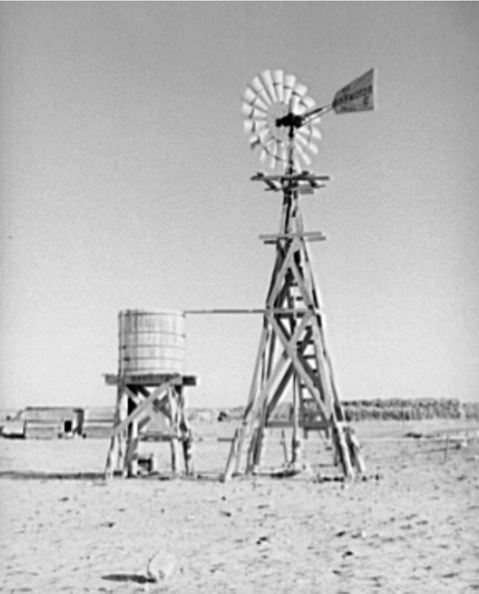
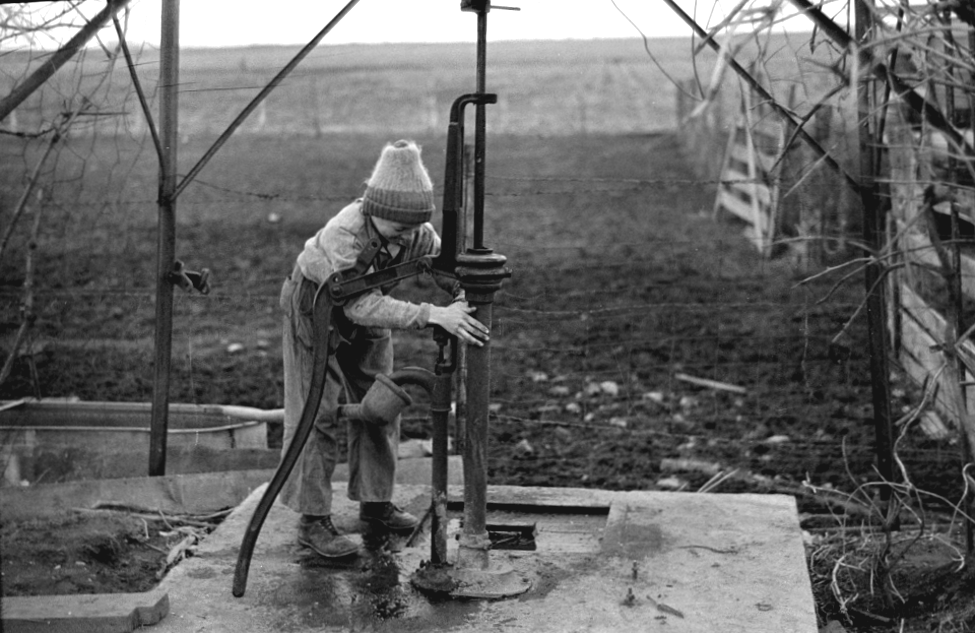
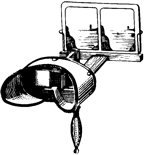 The double photo below is an old stereoscope card. It shows a
train on the famous Transcontinental Railroad line that was
completed to California in 1869.
The double photo below is an old stereoscope card. It shows a
train on the famous Transcontinental Railroad line that was
completed to California in 1869. 